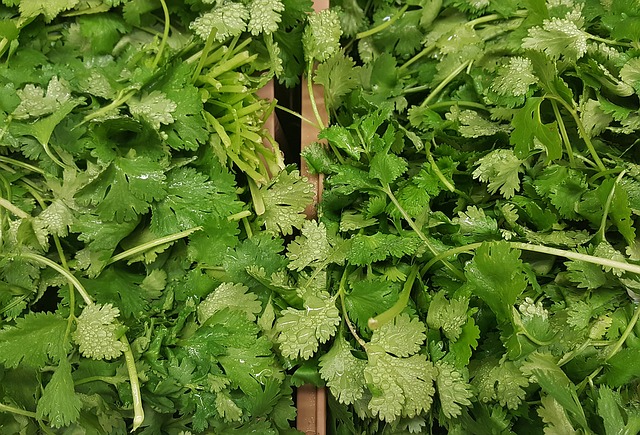I discovered cilantro back in 1984 during my first visit to Costa Rica. I had never heard of it and surely had never seen it back home.
Strangely, there was an entire mystery surrounding cilantro before I eventually figured out what it was, months after landing.
It started when I noticed there was a flavor in some of the foods that just tasted weird. I wasn’t crazy about this new flavor. I didn’t even know what it was and I already didn’t like it.
Luckily, that would change.
What Was So Unusual About Cilantro?
In 1984, nobody back home was using cilantro like they do today. It didn’t even exist yet where I lived and if it did, it would have been known as “coriander.” And coriander was a dried, bottled herb to us.
It wasn’t until spending months in Costa Rica that I had this conversation with another North American foreign exchange student. He brought it up one day and asked if I knew what the deal was with the “weird parsley?”
Indeed I didn’t. I was glad to know I wasn’t the only one in this predicament. So, we decided to investigate.
We finally learned that the weird parsley was cilantro, known as “culantro” in Costa Rica.
Further complicating matters, there’s a separate herb also named “culantro”, and this is not the same thing as cilantro. That type of culantro has long leaves and is used throughout the Caribbean and Asia.
For the sake of conversation, we’ll keep calling it cilantro.
Costa Rican Dishes Using Cilantro
Once I had nailed down this little herb, I tried avoiding everything it was in. That was no easy feat.
Everything seemed to contain cilantro! When rice was prepared, it was made using chopped onion, red pepper, garlic and–cilantro! Cooked beans were made with garlic and– cilantro! Innocent-looking salads contained—you guessed it! Cilantro!
On my Saturday morning market trips with my AFS dad (from here on known as Papi) guess what they sold massive bunches of? Cilantro!
Apparently cilantro wasn’t going away, and I wasn’t either. So I’d better get used to it. Little by little I became accustomed to its flavor.
Cilantro is used for the base flavor of a lot of Costa Rican dishes, not just rice and beans. When it’s chopped or sliced, it releases even more flavor.
It’s used in a number of popular dishes like small hamburgers known as “tortas de carne.” You’ll find it in chicken dishes like sudado de pollo, and chicken with rice.
Cilantro holds up quite well in cooking, the flavor fading a bit as it’s cooked out.
In salads, it can taste pungent to the uninitiated. A lot of people describe the flavor as “soapy.”
Making Peace With Cilantro
I buy and enjoy cilantro regularly now. It’s widely available here in New York State and it’s inexpensive.
However, cilantro was an acquired taste. It took me a long time to like it. I’m sure that the memories that come along with the smell of cilantro have a lot to do with it. The aroma that’s emitted when chopping cilantro brings back memories of Costa Rica, especially of the marketplace where everything is so fresh and the scent of cilantro wafts through the air.
Mind over matter once again.
Using Cilantro at Home
Our local grocery stores sell nice, big bunches of cilantro now. Once you bring it home, store it in the refrigerator. If you keep it in the produce bag from the store, it’ll remain fresh for a few days. If you’d like to keep it even longer, fill a tall glass or a vase with water and plop the cilantro in just like a bouquet and use it as needed.
I use cilantro when making rice and beans. I also like to chop a tablespoon or so and add it to guacamole.
Other suggestions are pico de gallo, and mango salsa. Refreshing on hot summer days.
Have you ever started out disliking a certain food only to love it years later? Funny how that works!





